Innovation Technology
The skin barrier and moisturizing to protect the skin are composed of complicated mechanisms. Here’s the GNS unique technology to make your skin healthy on the outside and inside.
Skin Moisturizing
New research on the moisture pathway inside the skin
- AQP-3 Gene Expression
Aquaporin (AQP), a water pathway, is divided into more than 10 types according to structure, characteristics, and function. Among them, AQP-3 is most expressed in the skin epidermis and forms a very narrow water channel with a thickness of 0.03 nm in keratinocytes present in the basal layer. This moisture channel selectively passes moisture, glycerol, and urea, and helps moisture move into the skin. GNS proposes a new solution to replenish moisture in the skin.
- Main Products
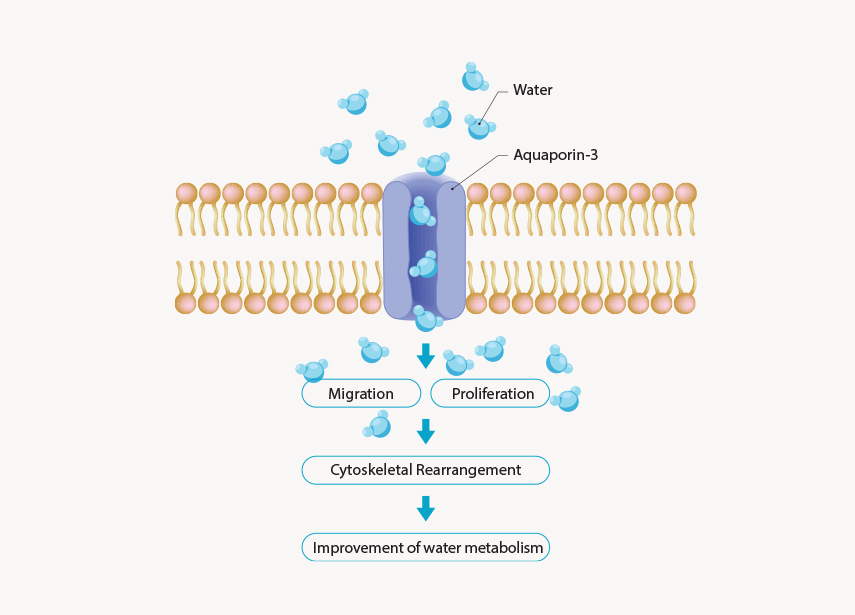

Skin Barrier
Research on correlation between skin barrier and natural moisturizing factors
- Filaggrin Gene Expression
Filaggrin is a substance in which Profilaggrin is decomposed by protease in keratinocytes. When filaggrin is decomposed by Caspase-14, a proteolytic enzyme, it is converted into a natural moisturizing factor (NMF) and plays a role in maintaining moisture in the stratum corneum of the skin. GNS introduces a method to build the skin foundation right by protecting the skin barrier.
- Main Products
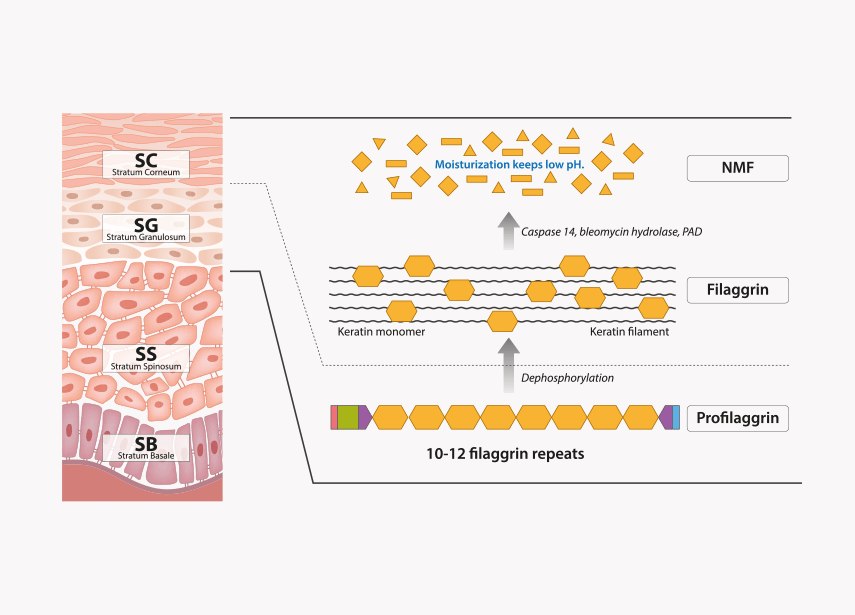

You can protect your skin and prevent aging through anti-aging care. We suggest a method unique to GNS to prevent skin aging.
Anti-glycation
Solution to the structure inside the skin that has collapsed due to sugar toxin
- AGEs Formation Inhibition Activity
Glycation is a process in which sugars such as glucose and fructose floating in the blood combine with proteins and fats in the body to destroy normal cells or change their structure, causing functional abnormalities. Advanced glycation end products (AGEs), a combination of sugar, protein, fat, and others, accelerate inflammation, cell oxidation, and aging in the skin. GNS proposes a solution to protect the skin from being destroyed by sugar toxin.
- Main Products
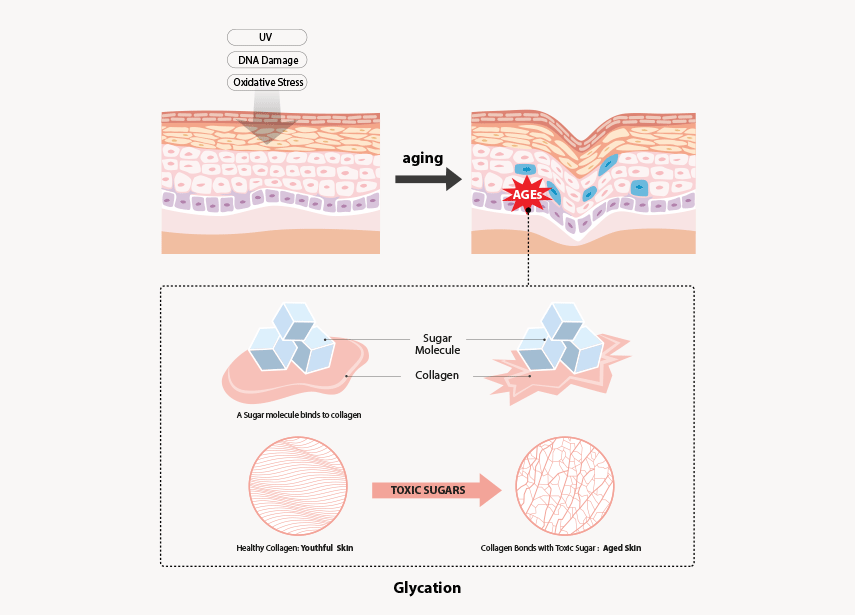

Anti-senescence
Research on the mechanism of cellular senescence
- SA-β-gal Positive Cells Inhibition Activity
SA-β-gal is an enzyme that serves as an indicator of aging and is overexpressed in senescent cells. Senescent cells can be confirmed by measuring the activity of SA-β-gal. GNS introduces a fundamental solution to cellular aging by identifying its mechanism.
- Main Products
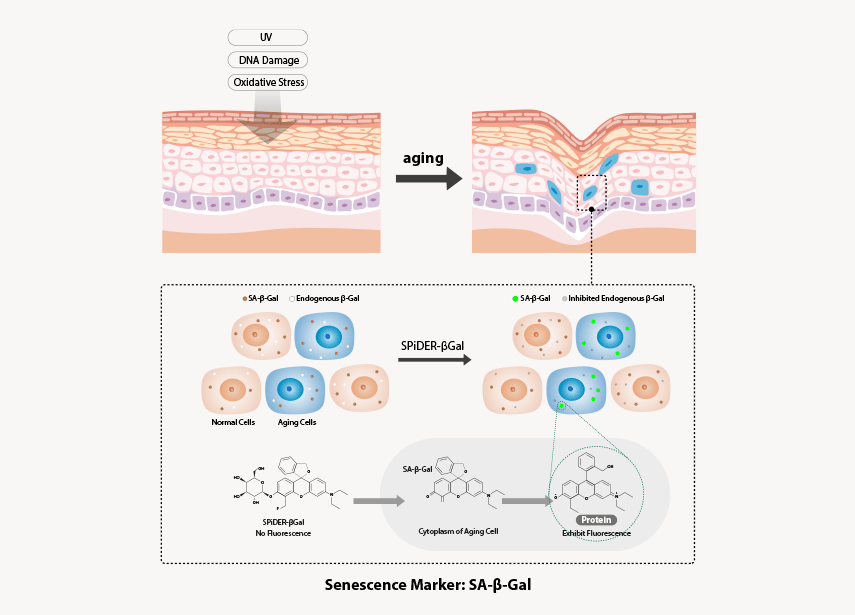

Photoaging
Research on the effect and mechanism of UVB on the skin
- UVB-induced ROS Generation Inhibition Activity
Ultraviolet rays are divided into UVA, UVB, and UVC depending on the wavelength. Among them, UVA (320-400 nm) and UVB (280-320 nm) penetrate the epidermis and reach deep into the dermis, causing erythema, sunburn, and pigmentation, which leads to skin cancer, skin aging, etc. GNS proposes a way to keep your skin safe from photoaging.
- Main Products
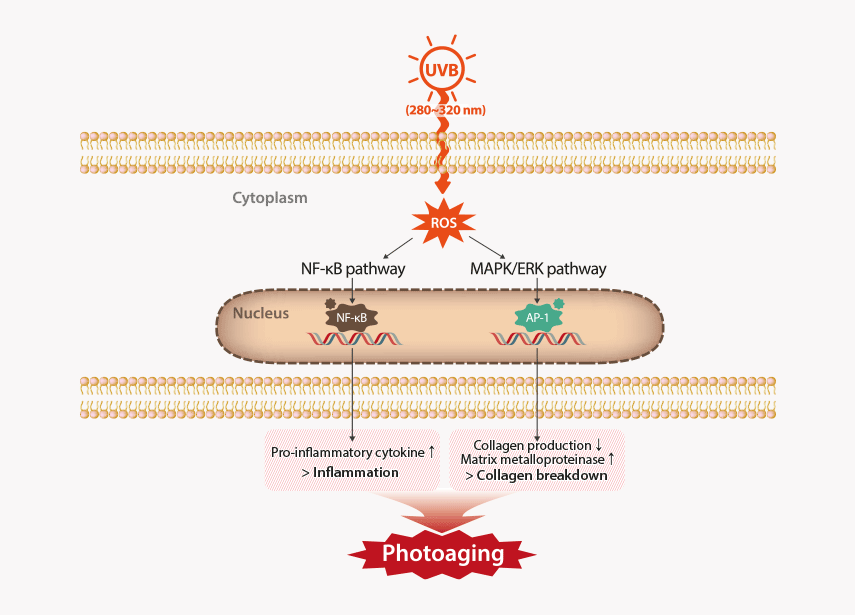

Apoptosis
Research on the mechanism of apoptosis
- Anti-apoptotic Activity
Cell proliferation is critical for re-epithelialization and wound healing of skin tissue. Normal fibroblasts and keratinocytes that make up the skin secrete factors such as cytokine to induce cell proliferation or synthesize extracellular matrix. However, when cell damage occurs due to external stimuli, cells stop the cell cycle and cause apoptosis (cell death). Here’s the GNS unique solution for skin cell regeneration.
- Main Products
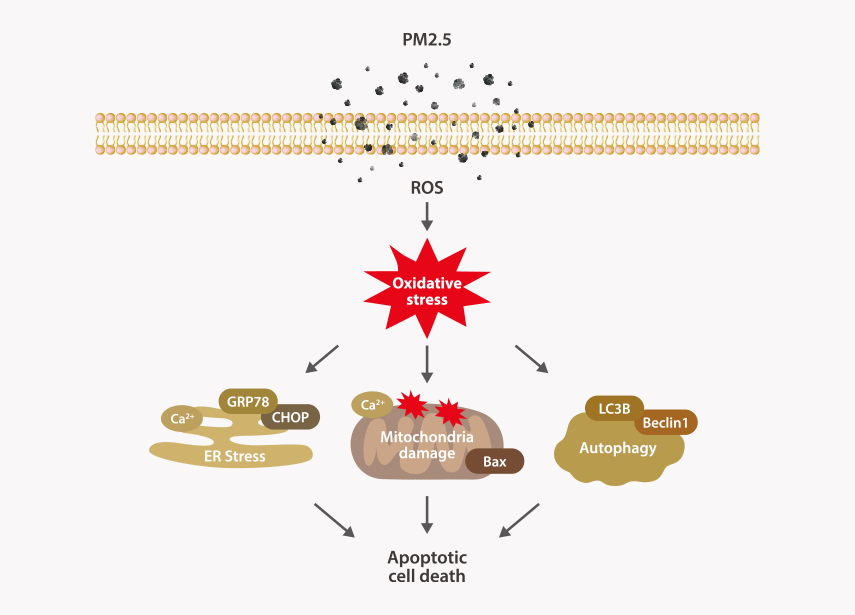

Here’s the GNS solution to protect the skin from fine dust and blue light that penetrate deep into the skin due to internal and external environmental factors.
Bluelight
Research on the relationship between blue light penetrating into the dermal layer of the skin and skin aging
- - Bluelight-induced ROS Generation Inhibition Activity
- Improvement of Bluelight-induced Damaged Skin Barrier and Wrinkles
Bluelight is a short-wavelength visible light that exists in the region of 380-500 nm. The main source of blue light is sunlight, but digital screens such as monitors, smartphones, and televisions, as well as LED and fluorescent lights, serve as additional sources of light. We propose the GNS unique solution to protect the skin from blue light, a cause of skin aging.
- Main Products


Anti-pollution
New research on the relationship between fine dust and skin barrier
- Cell Recovery Activity from PM2.5-induced Damage
Fine dust (PM2.5) is a polluted particle about 20 times smaller than a pore, and it penetrates deep into the skin and causes inflammation. When PAR-2 (Protease-activated receptor-2), an important regulator of inflammatory response and barrier function, is activated by external stress such as fine dust, inflammatory substances are expressed, resulting in skin inflammation and abnormal skin barrier function. Here’s the answer of GNS to prevent skin damage from fine dust.
- Main Products
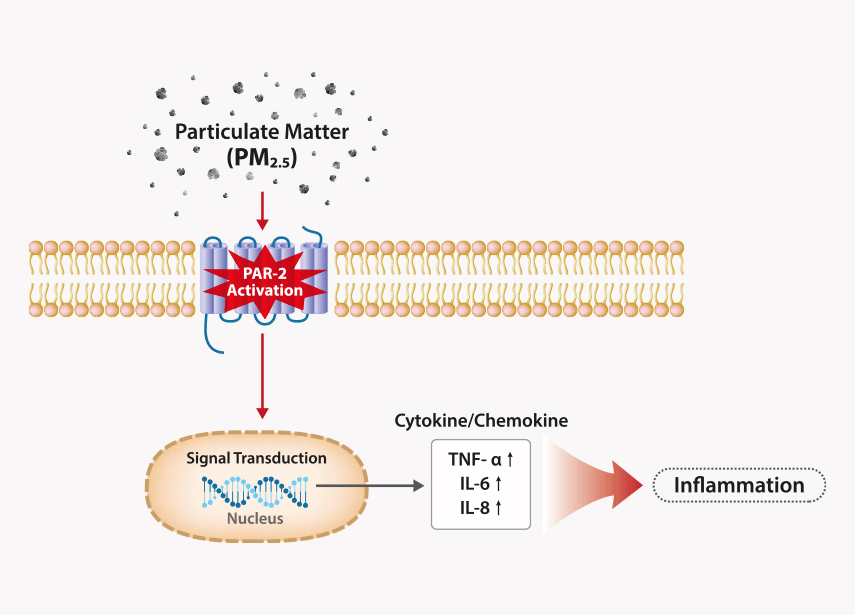

Here’s our effective hair care solution through hair growth and hair protection.
Hair Care
Research on the hair growth mechanism using hair follicle dermal papilla cells
- - Promotes the Proliferation of Human Hair Follicle Dermal Papilla Cells
- VEGF, bFGF, β-catenin Gene Expression
Hair growth efficacy can be confirmed through the expression of hair growth-related genes such as VEGF (vascular endothelial cell growth), bFGF (fibroblast growth), and β-catenin (hair follicle formation and hair growth promotion), in the human hair follicle dermal papilla cells (HDP), key cells responsible for hair growth. Meet the GNS solution to make your hair healthy.
- Main Products
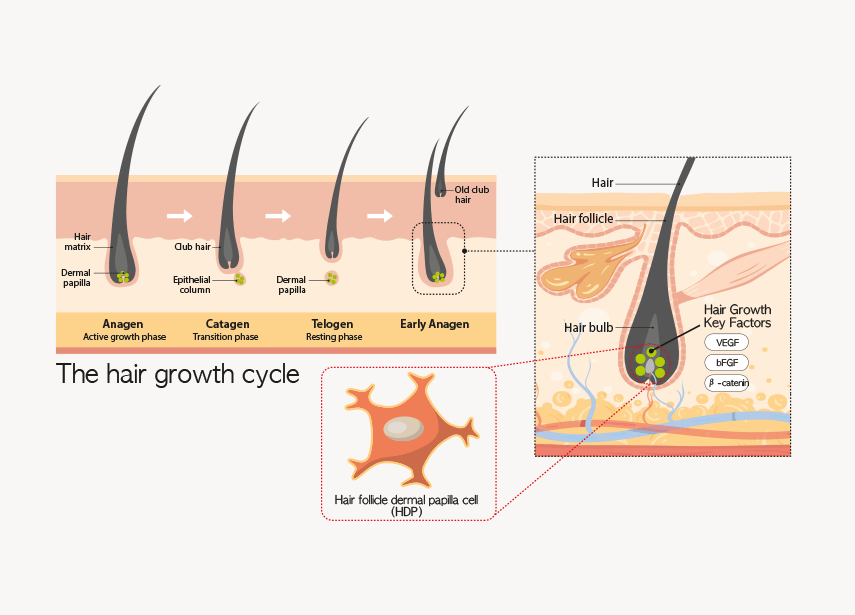

GNS studies constantly on new and diverse skin mechanisms.
Anti-acne
Solution to acnes, a chronic inflammatory disease
- - Inhibition of Proinflammatory Cytokines in Cutibacterium Acnes-Induced Inflammation
- Cutibacterium acnes Growth Inhibition
Acnes is a chronic inflammatory disease of the sebaceous glands of hair follicles. The main causes include abnormal hair follicle keratinization, increased sebum secretion, and proliferation and inflammation of Cutibacterium Acnes (C. acnes). In particular, C. acnes causes skin troubles (such as acnes) by inducing inflammation in the walls of hair follicles or in the cells around pores by converting the neutral fat among sebum components into free fatty acids. GNS proposes a way to keep your skin safe from chronic diseases.
- Main Products


Astringent
New research on the astringent action of the skin
- Astringent Activity
Astringent activity is an action that contracts tissues, blood vessels, pores, etc. through reactions such as coagulation and precipitation through the interaction of proteins in body tissues and metal ions in astringent substances. GNS proposes a solution with a sure effect of pore shrinking.
- Main Products
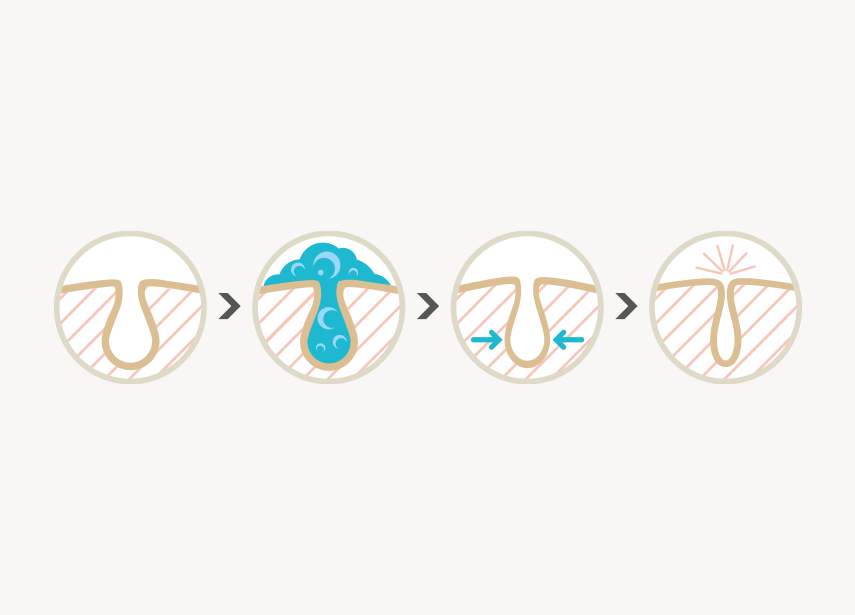

- Product Inquiry


